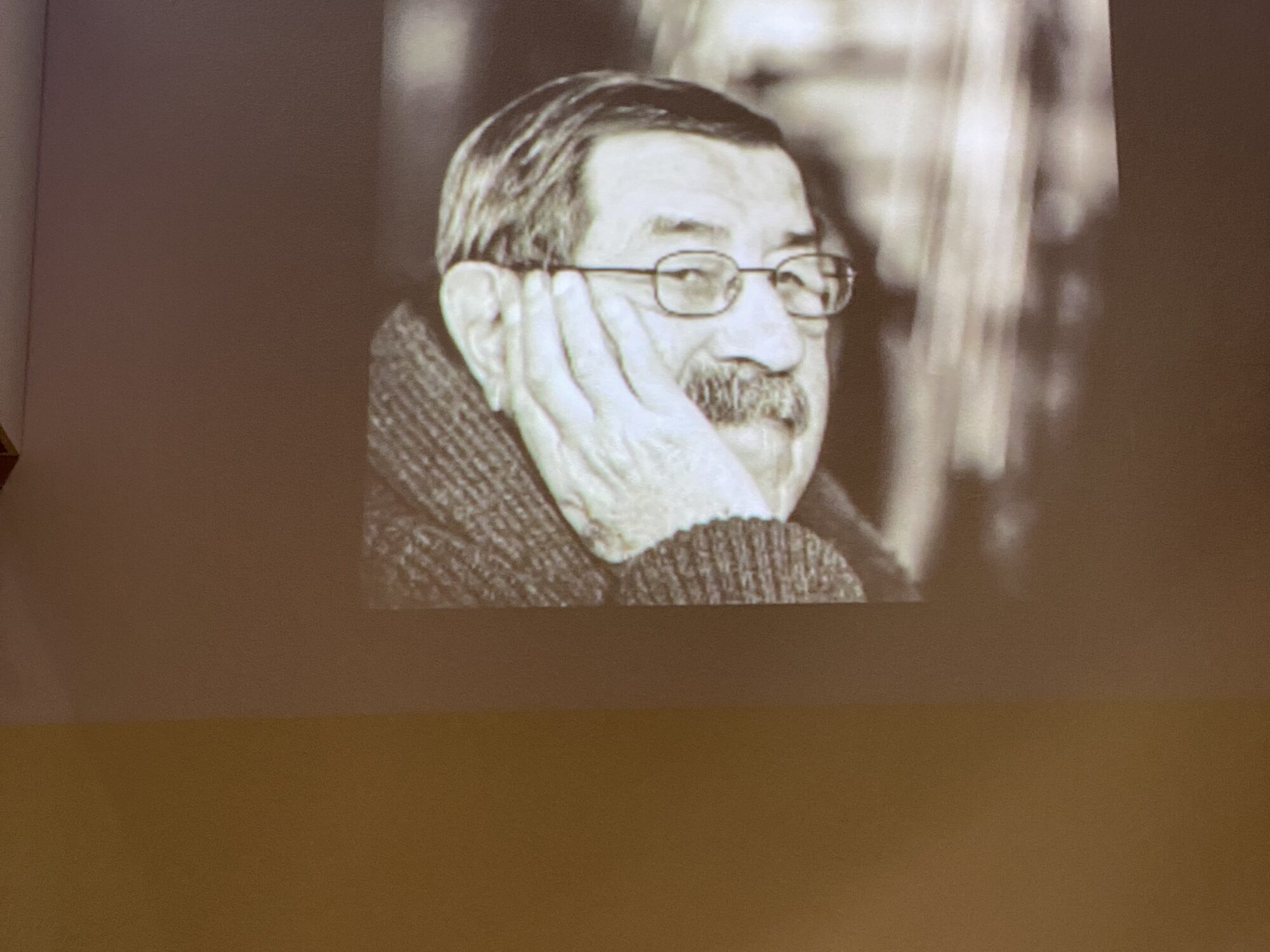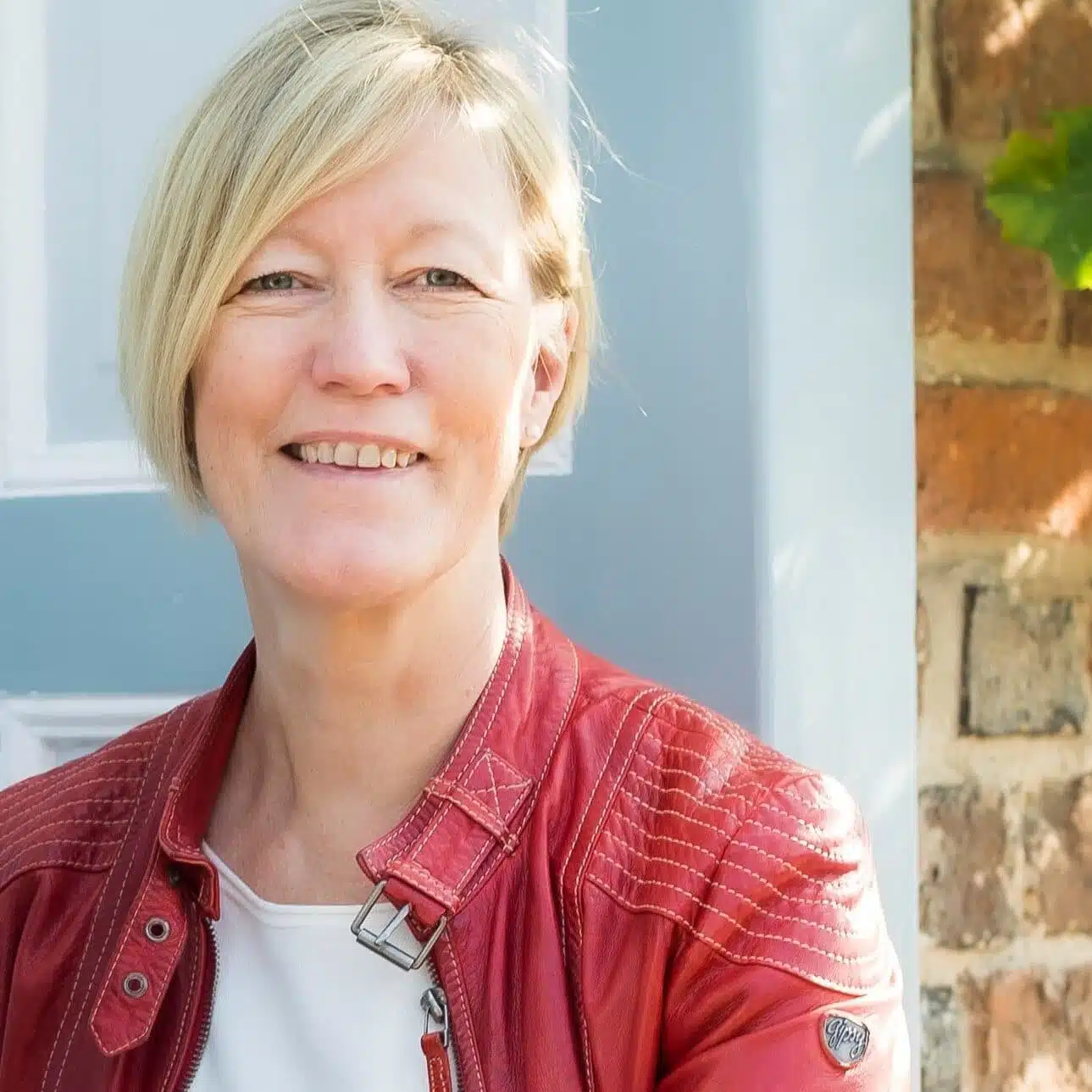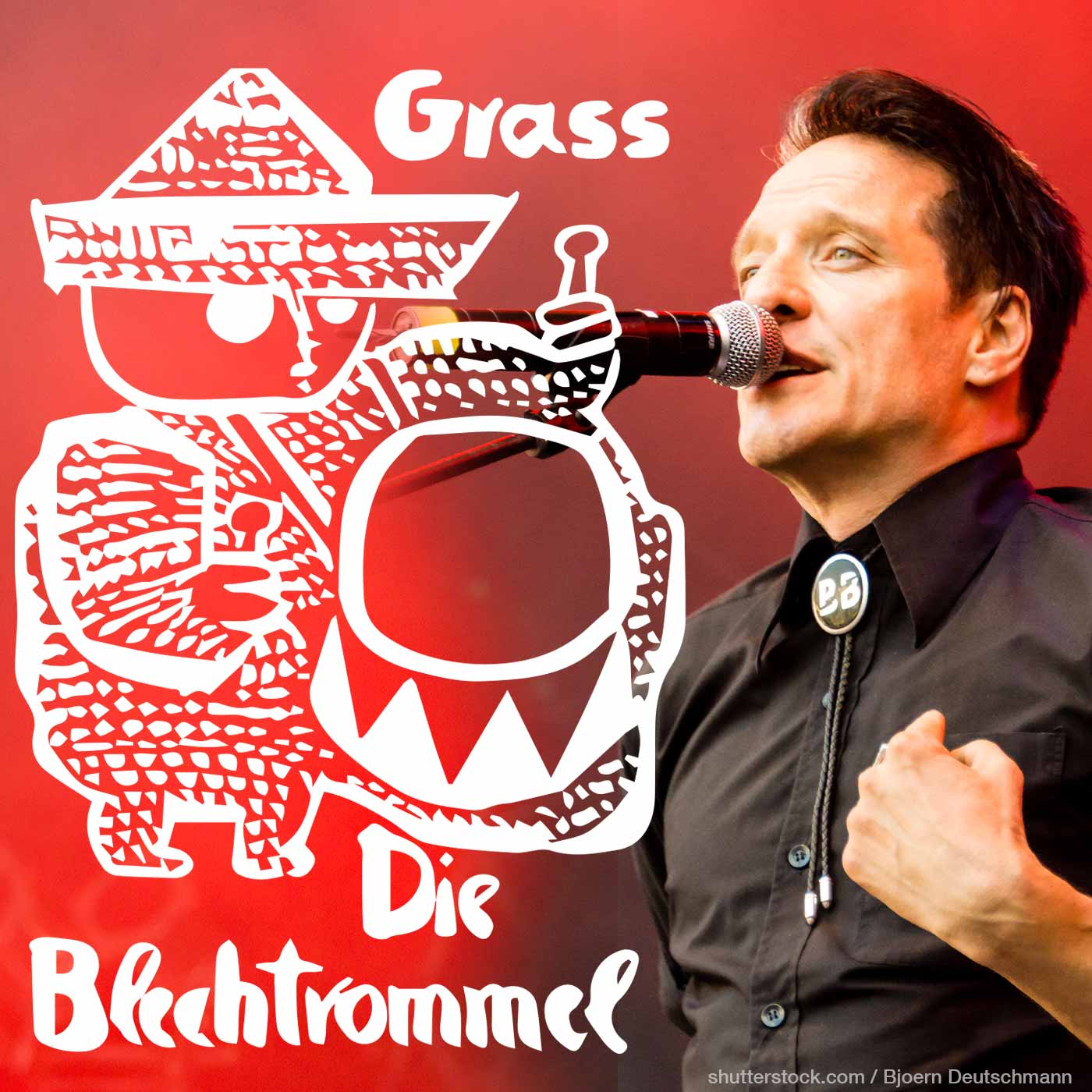The new permanent exhibition at the Günter Grass House in Lübeck
And again I visit theGünter Grass House in Lübeck’s Old Town, which will celebrate its 20th anniversary next October. A fitting occasion for the new conception of the bilingual permanent exhibition entitled “That’s Grass“, which provides completely new insights into the work of the Nobel Prize winner and for which the exhibition designer Matthias Kaminsky is responsible. In recent years, several of the company’s offerings have already been digitally processed. An indispensable step, without a doubt. Nevertheless, cultural institutions remain analogous places of direct experience. This is especially true at the site of Günter Grass’s many years of work.
Grass and his beloved Gdansk
The entrance, hallway and garden are now included in the overall exhibition, which spans a wide arc from Grass’s birth in 1927 to the year of his death and the thematic complex of “aftermath” of the exhibition. The years of childhood and youth spent in Gdansk have found a space in each of the writer’s works. The experience gained in his hometown was one of, if not THE basis of his entire creative work. So it is not surprising that in the hallway of the house, which is directly adjacent to the store, there is a carpet showing a map of Gdansk. The museum guest stops, immediately his curiosity is aroused by photographs from the artist’s childhood years.
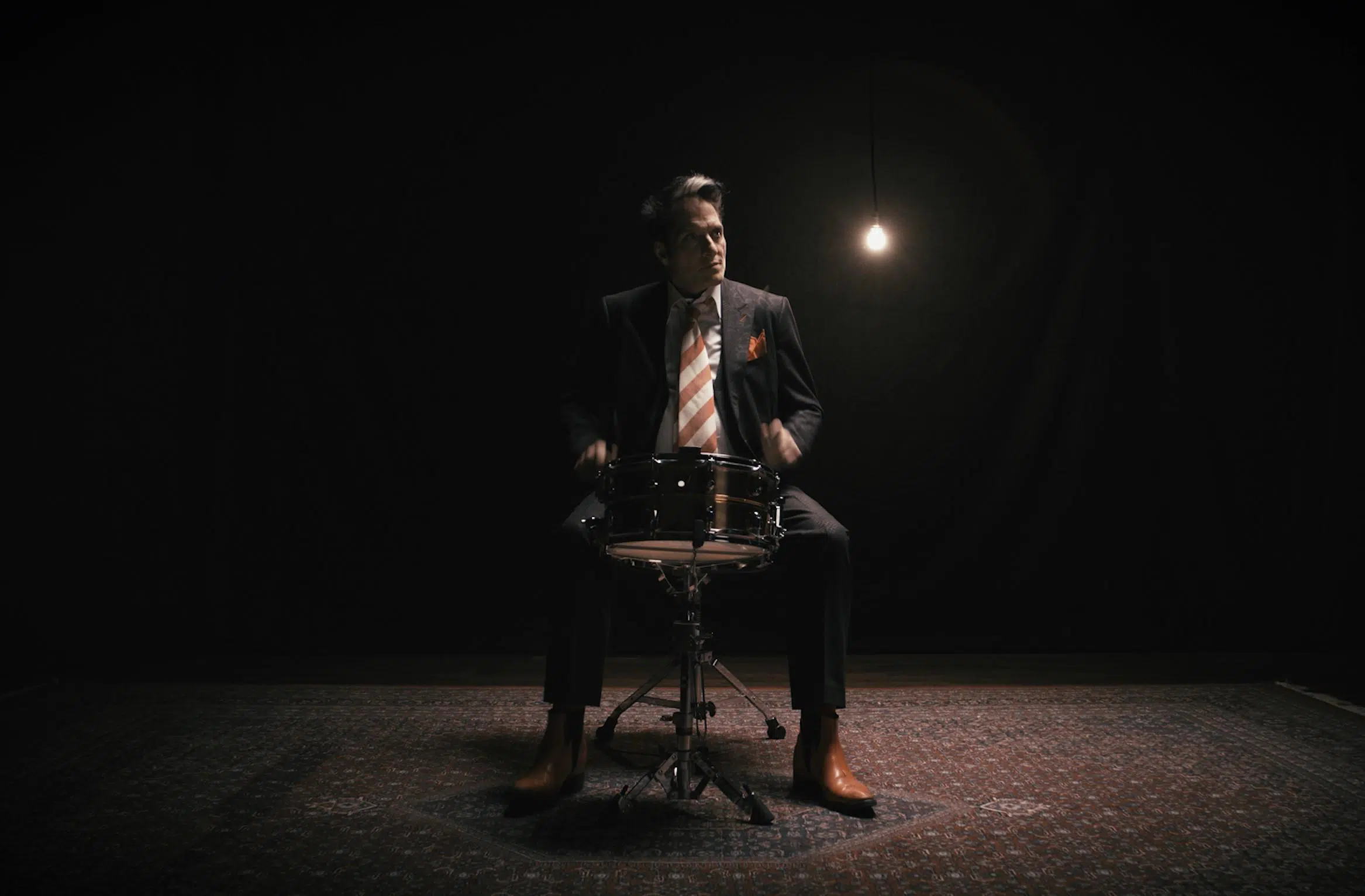
Video installation with Bela B.
Even more impressive is the video wall consisting of nine monitors showing a film collage by the director Marie König shows. A mammoth task, as she herself says: to reflect the extensive Grass oeuvre while portraying a certain timelessness. For example, she recorded scenes from the film versions of “The Tin Drum”. Likewise sequences from “Cat and Mouse”. But also numerous impressions from the everyday life of the people, which is increasingly overshadowed by National Socialism. Interwoven are scenes of the drumming Oskar Matzerath and the drummer of “Die Ärzte” Bela B., who was immediately willing to support the project. In addition, debris and burning houses. In view of the current Ukraine war, which is intensifying by the hour, this is an oppressive experience.
And in the background, above it all, we hear the voice of Günter Grass giving answers to the question “Why do I write?” “Blubb, ppschsch – what remains, I write down.”
Take a look at the exhibition:
The LÜBECK ZWISCHENTÖNE have also been to the Günter Grass House and reported on the installation of Bela B.. Here you can hear an excerpt from the podcast:
It was a dancin’ mad time
The young Grass meets us in the garden, which now has a bench that invites you to linger and take in what you see and perceive the inspiring architecture. So typically Lübsch with brick and North German sky. A large wall of photographs shows Grass as a young artist who enjoyed his life in the 1950s and whose days were filled with traveling, dancing and going out. A Grass photo from 1956 symbolizes the time of transition when the visual artist also became a writer. Above the entrance to the main building is emblazoned the artist’s signature in LED. In the evening, a luminous invitation to the guest to enter the creative world of the Nobel laureate.
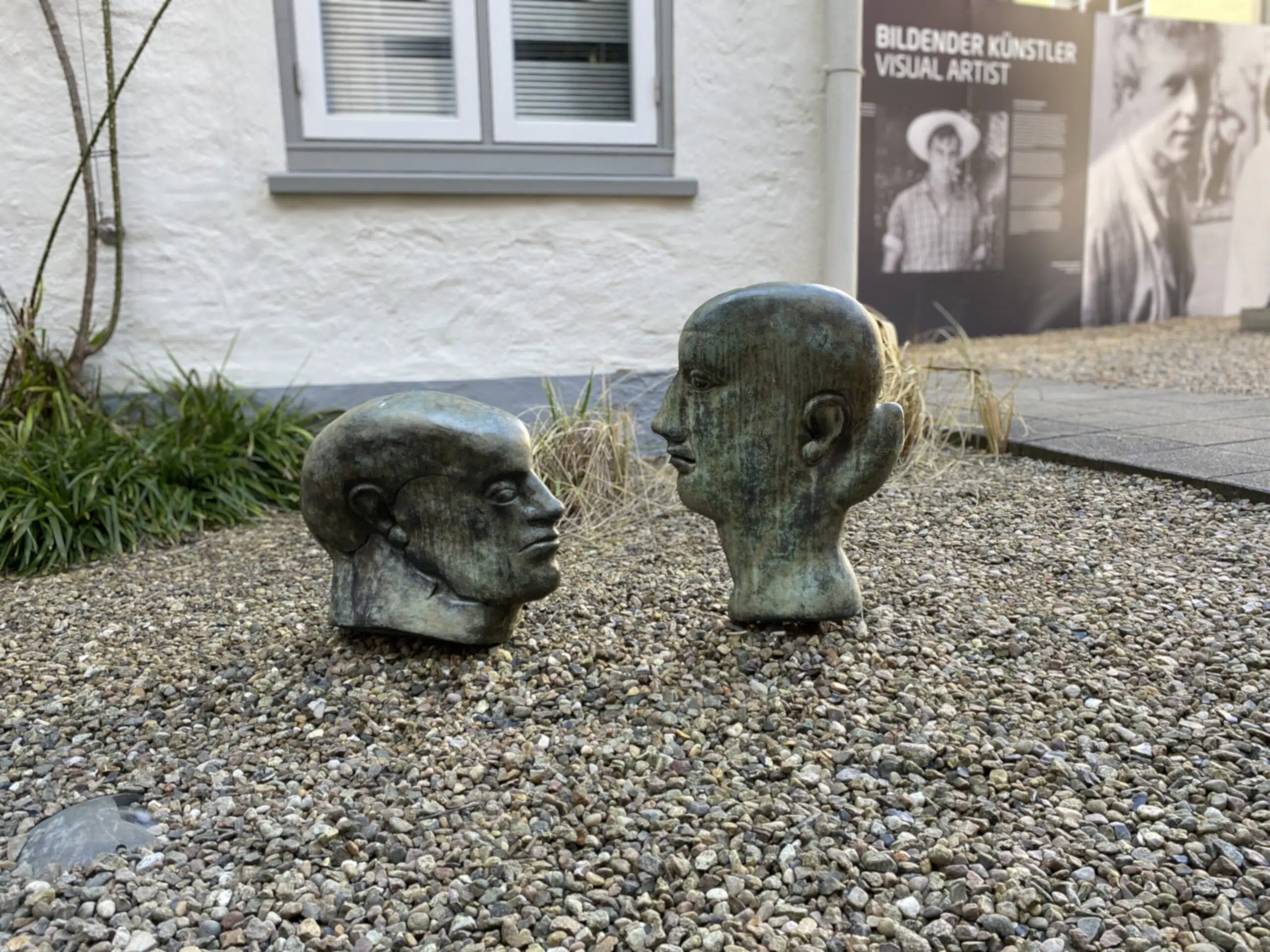

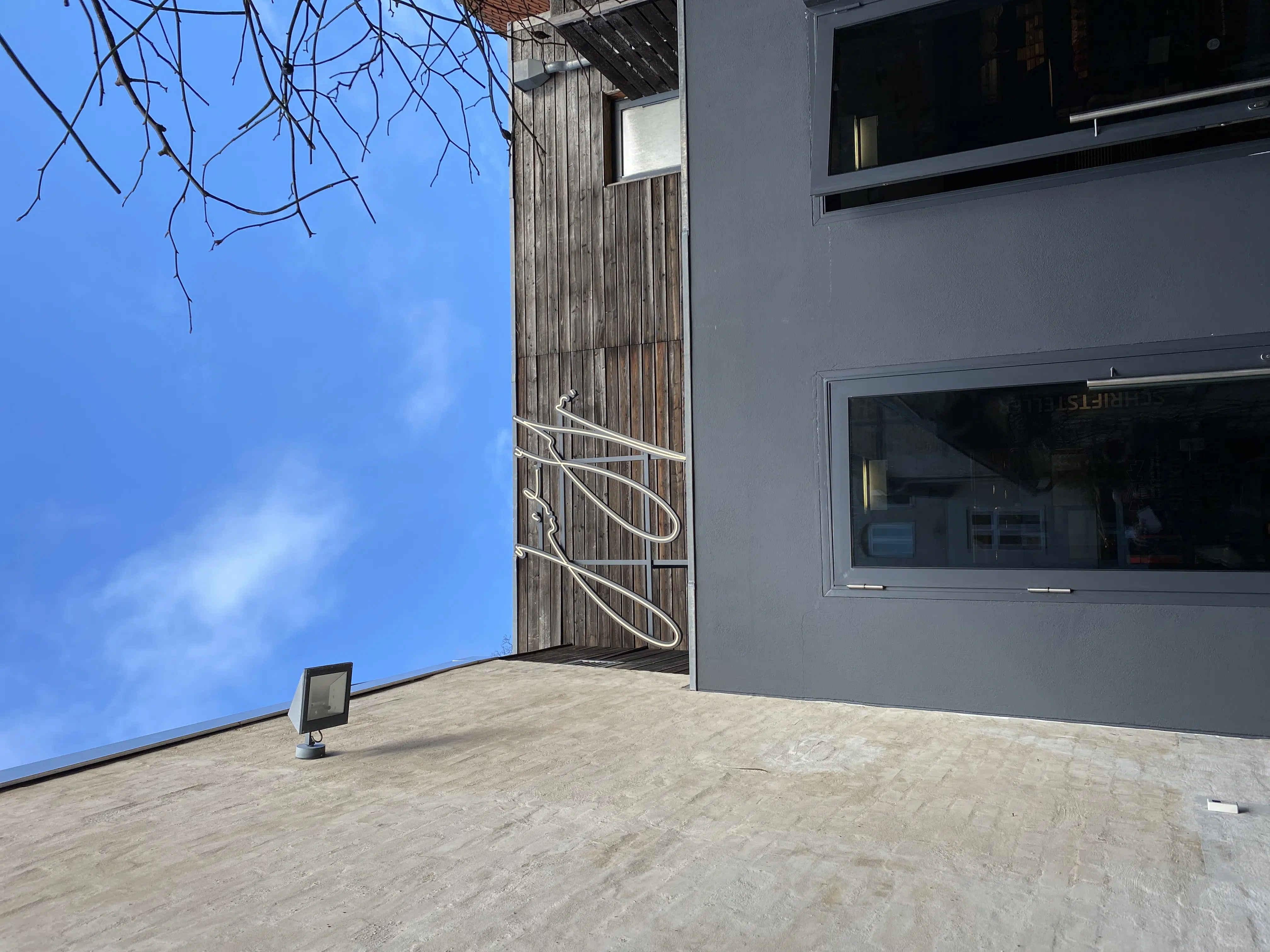
The big world in miniature
Fortunately, my secret favorite exhibit from the former permanent exhibition, the grocery store from Grass’ “Tin Drum,” is still there. I fell in love with it right away when I first saw it back then. The deja-vus of my childhood: the big cash register, a yellow flypaper dangling from the ceiling. My dad was also a shopkeeper with heart and soul in an unpacked store. Only they didn’t call it that back then. The colonial store in the Grass House was complemented by three dioramas by the artist Sara-Christin Richter , who dealt with symbols and many small details from The Tin Drum. The work on a figure takes 2-3 weeks, the artist reports. If you like, you can learn more about their work here.

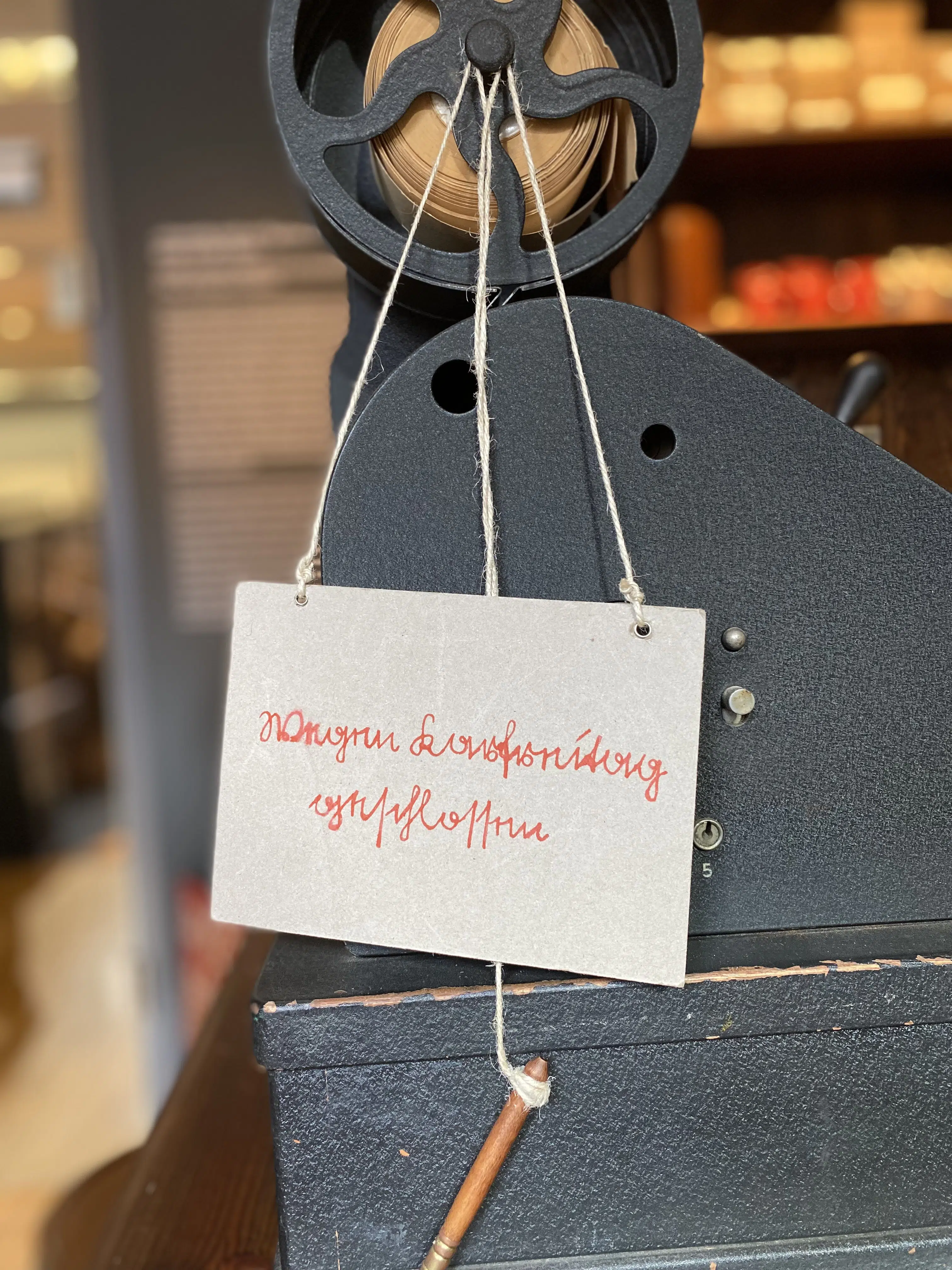
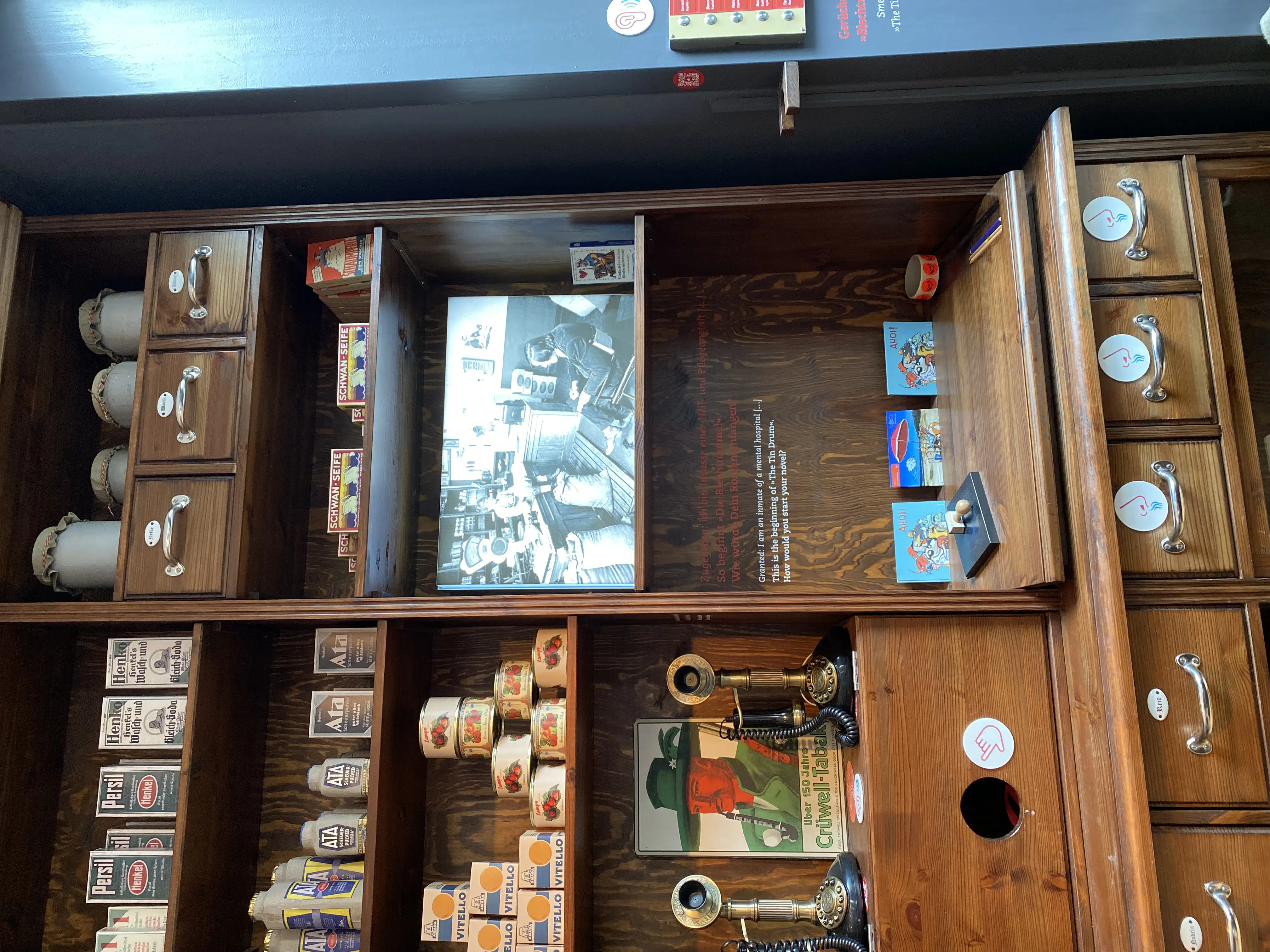
Magic on white paper
Through the glass door goes to the large exhibition area. The main room will feature a “best of” show of some 1,400 existing prints. Some of the exhibits, such as drawings from Grass’s student days, are on public display here for the first time. The tour allows visitors to explore the full spectrum of Grass’s work through selected examples – from the drawings of the early years to the Danzig Trilogy, the etchings of the 1970s, the watercolor works of the 1990s, and the late works of the 2000s, when Grass continued to perfect his own techniques. Grass worked his magic on white paper. As a painter and as a writer.
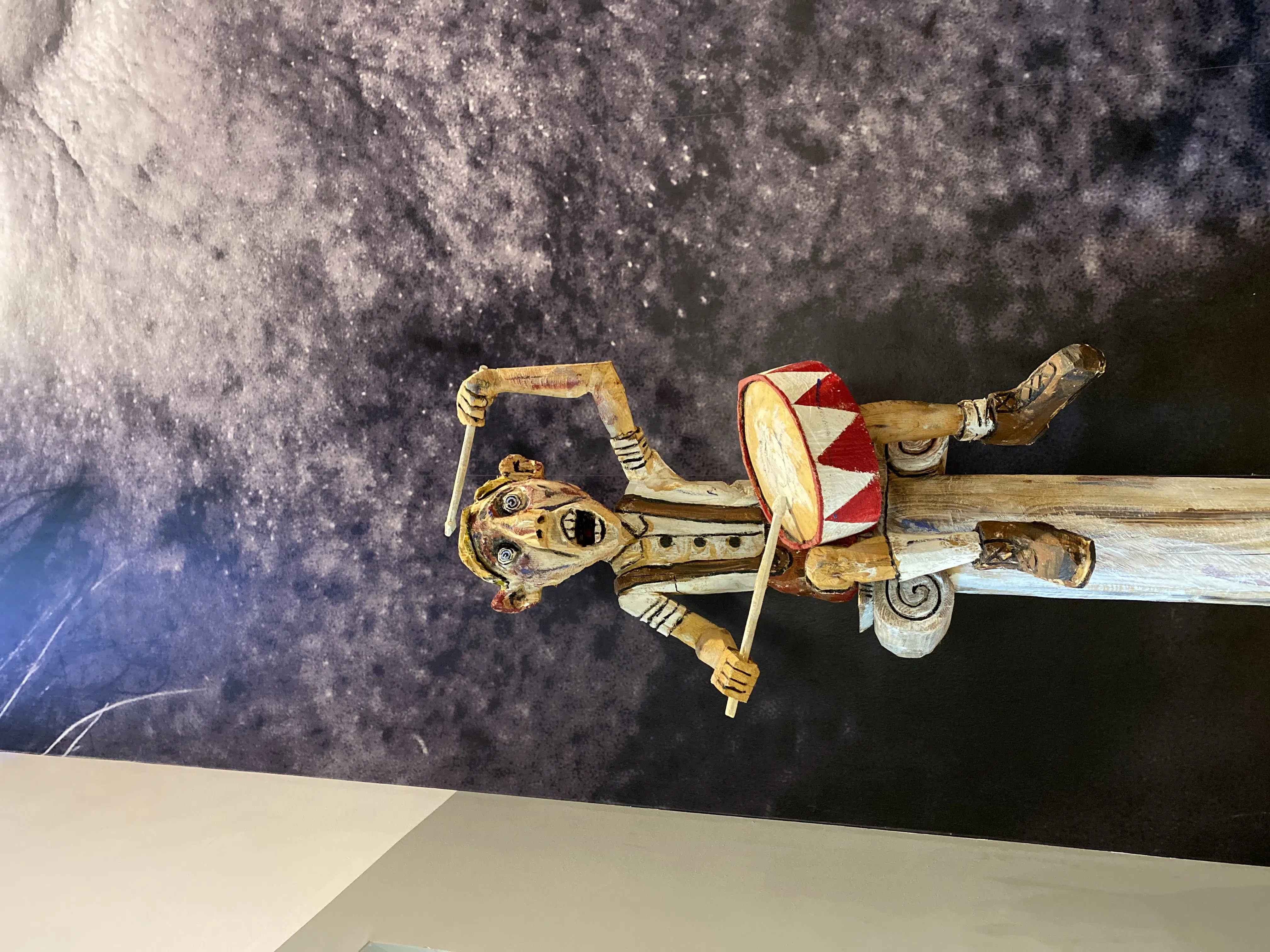
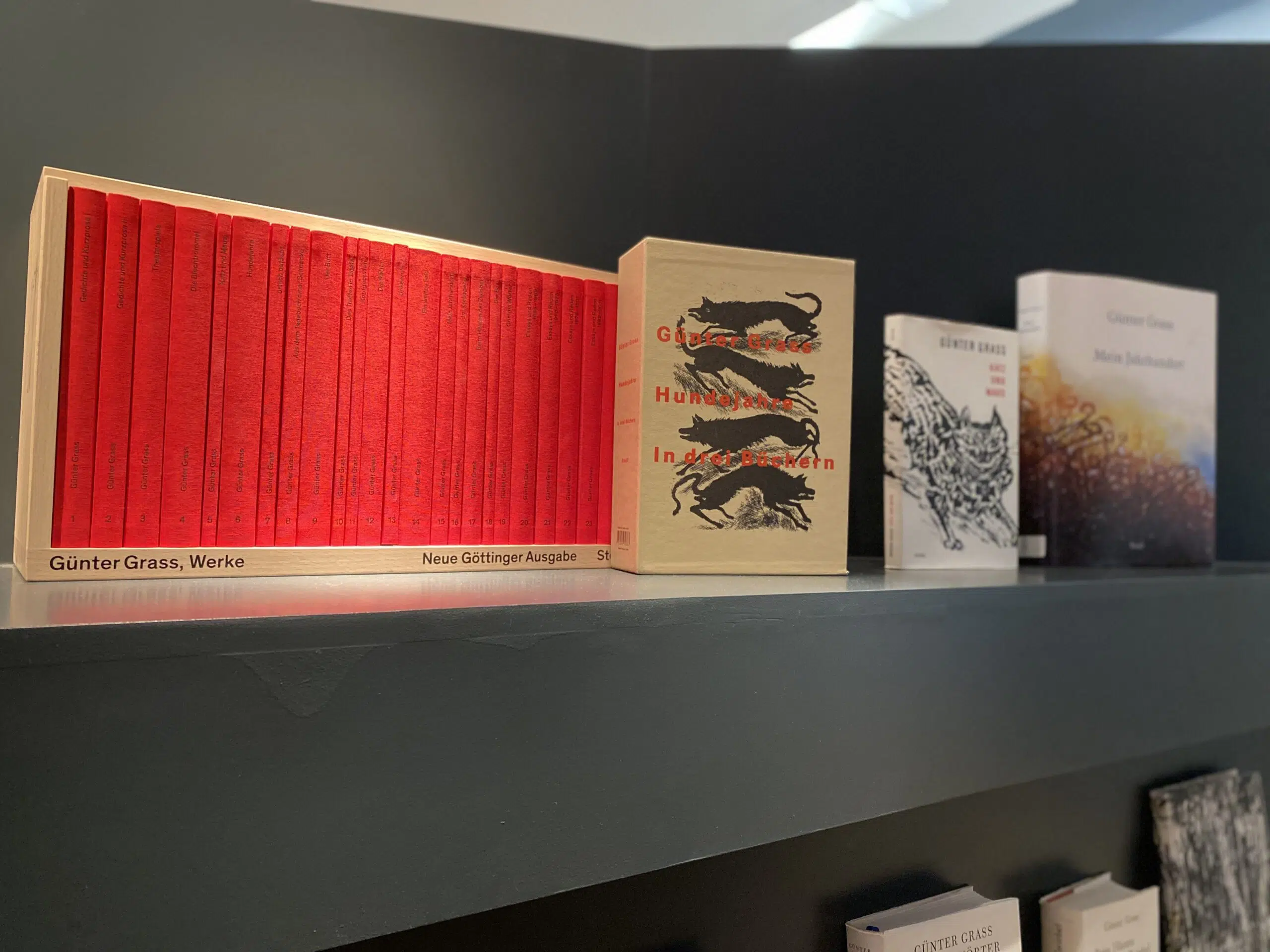
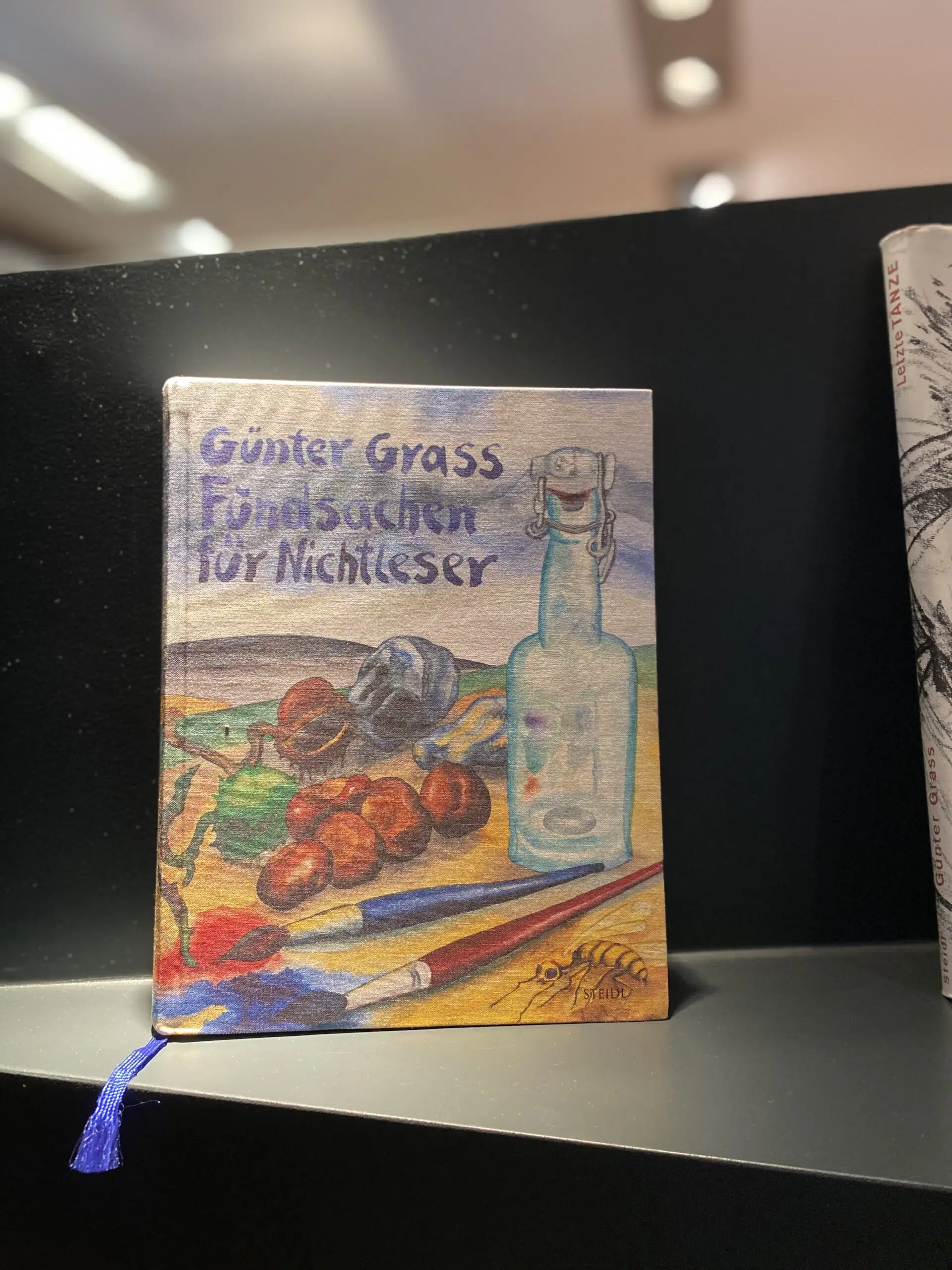
Here also stands a loan from Grass’s son Bruno: the Olivetti typewriter on which Günter Grass wrote most of his “Tin Drum” in the late 1950s and which was a gift from his father-in-law’s sister for the wedding of Günter Grass and Anna Schwarz. The date of the marriage, April 20, 1954, was quite an imposition for his father, says Bruno Grass. He said that his father later gave him the typewriter and that he now brought it here in a sturdy ALDI bag. “My father certainly never bought there,” he notes with a grin. Grass was also a private person, a father, a man from Danzig and a man from Lübeck. Wherever he went shopping.
